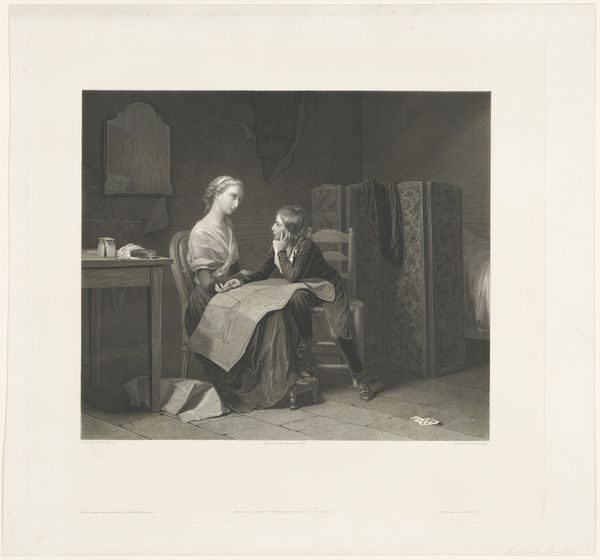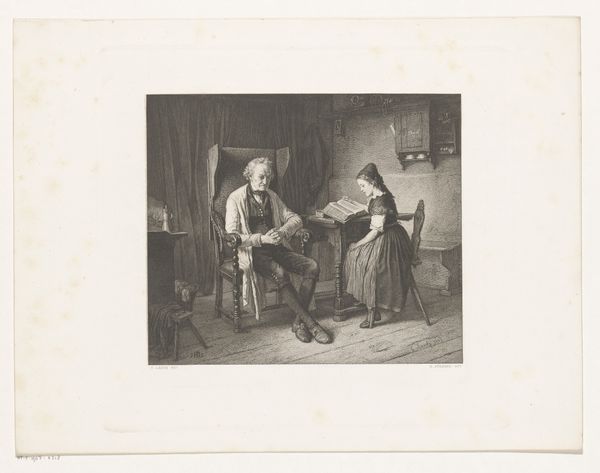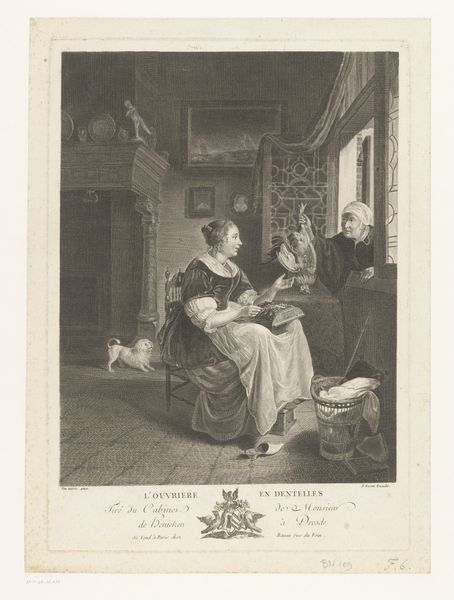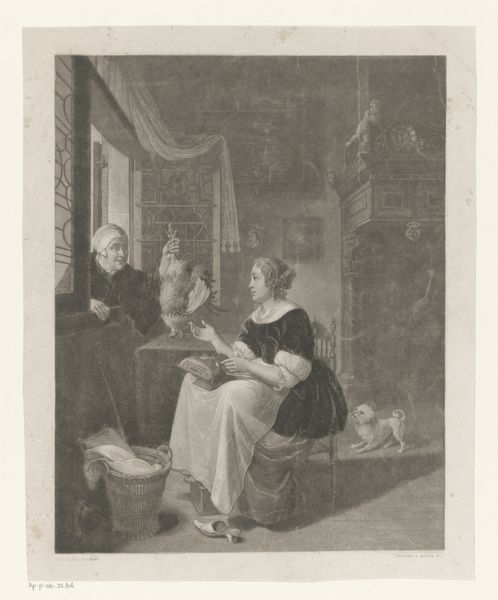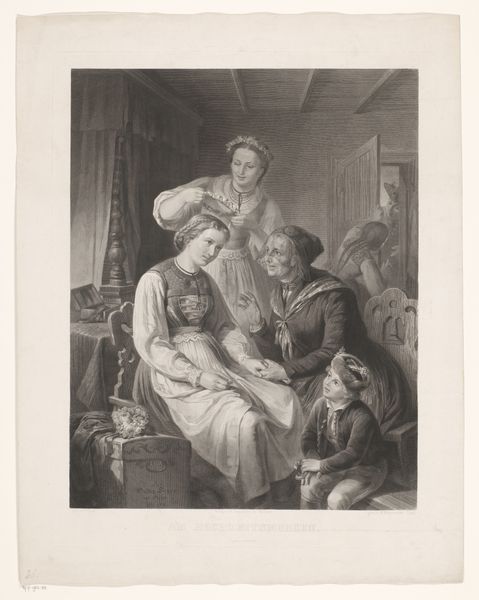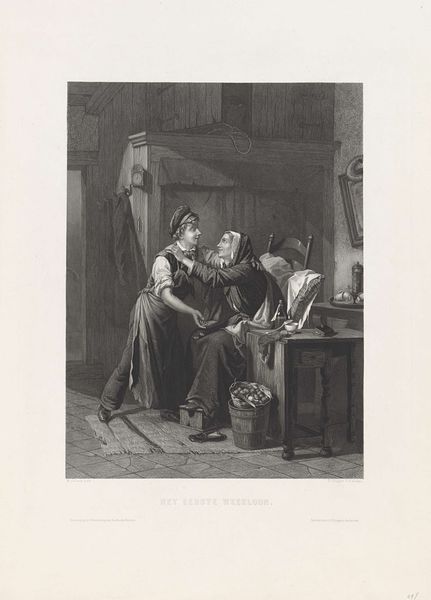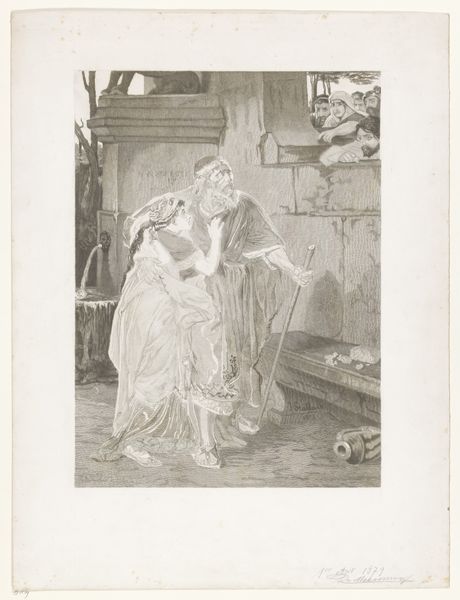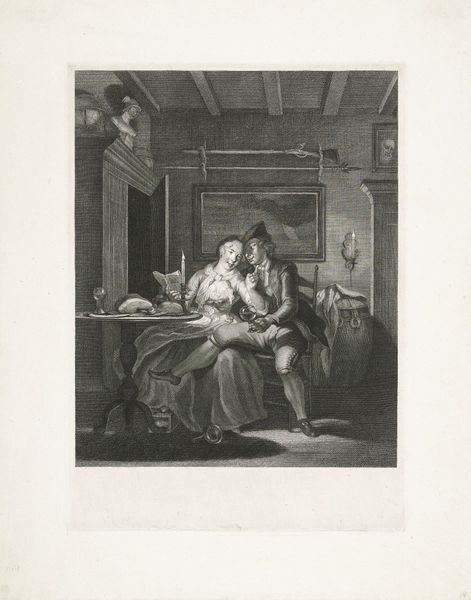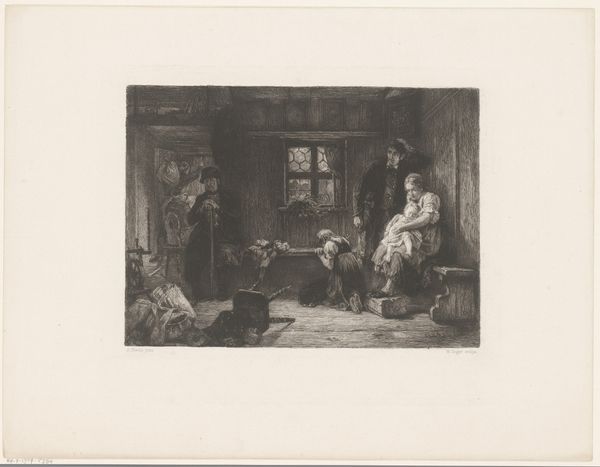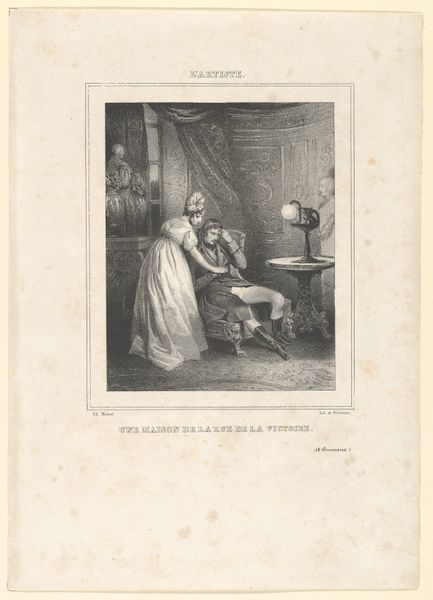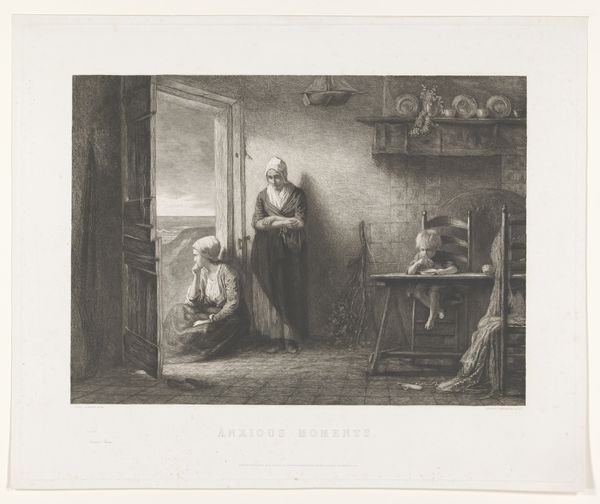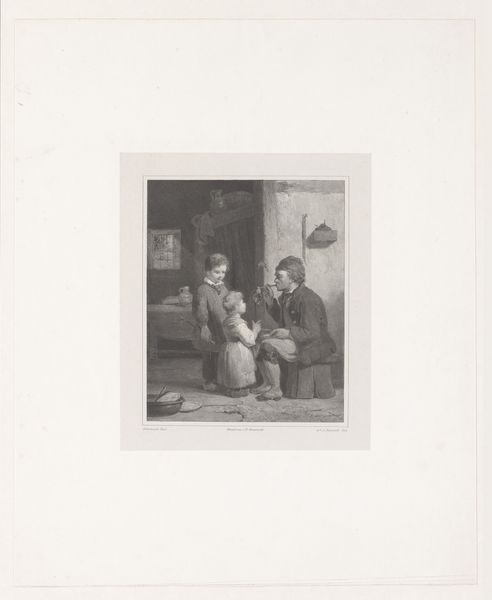
print, engraving
#
print photography
#
narrative-art
# print
#
historical photography
#
genre-painting
#
engraving
#
realism
Dimensions: height 684 mm, width 513 mm
Copyright: Rijks Museum: Open Domain
Curator: This engraving, titled "Man probeert een vrouw te verleiden die aan een weefgetouw zit," created sometime between 1860 and 1862, depicts a rather intimate domestic scene. The literal translation of the artwork's title is "Man trying to seduce a woman sitting at a loom". Editor: Yes, there is something undeniably intimate, almost voyeuristic about the composition. The subtle gradients of grey, almost like a whisper, suggest both warmth and the potential for some conflict. Curator: Observe how the engraver plays with light and shadow to define form and create depth. Notice the textural contrast between the smooth faces and hands, against the intricate patterns of her dress. It's a visual hierarchy. Editor: It's an image saturated with socio-economic realities. We see a woman's labor, depicted as this sort of quaint backdrop. How does the seduction narrative interact with or perhaps undermine the narrative of labor that the image is explicitly trying to convey? Curator: The seduction can also be read as integral. Is it her agency to reject it? Look how the weaving wheel mimics a halo of sorts; the textures also resemble fur from an animal that peers toward the scene from the corner. What do we think the artist meant with these compositional parallels? Editor: Perhaps it's the attempt to depict an inherent balance in their dynamic? Still, I think it's vital we don't gloss over how the scene stages male agency versus female constraint. The way he leans over her while she is confined by her job – there's an embedded tension. Even in the intimacy. Curator: Agreed; a very palpable tension arises from these constraints. Editor: Considering the period this print was created, the way the artist depicts the woman and her "domestic prison" speaks to the changing dynamics of social structures and gender. Perhaps it can be considered an early moment of subtle social critique. Curator: It also is indicative of where fine art sat culturally at the time. Printmaking allowed greater artistic accessibility to mass culture. I think its charm resides within these simple, intimate gestures, while the medium also allowed more accessible distribution of this type of narrative art. Editor: Well, I'm now curious to see where these themes go and what conversations will emerge.
Comments
No comments
Be the first to comment and join the conversation on the ultimate creative platform.
